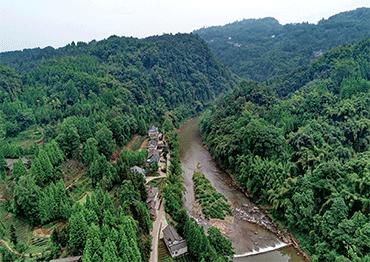A report by China’s National Forestry and Grassland Bureau released on June 30 reveals that the country has returned 515 million mu (34.3 million hectares) of farmland to green land in the last 20 years under the auspices of the Grain for Green project.
The project started in 1999 to control soil erosion and sandstorms caused by intensive agriculture and desertification. It covered 25 provinces, municipalities and regions and cost 517.4 billion yuan (US$76b). The report finds afforestation increased by an average of 4 percent in targeted areas. The new woodland accounts for 4 percent of the total increased green land worldwide.
The Grain for Green project has greatly improved the ecology and raised local people’s awareness of environmental protection, the report said. A good example is the government of Yan’an, Shaanxi Province, which designated a national natural reserve on the Loess Plateau which had seen serious soil erosion. The reserve is now China’s biggest habitat for wild leopards.
The report cited a 2019 NASA survey which said that China’s net growth in green land between 2000-2017 was 25 percent of the global total, the largest in the world, although this includes the increase in agricultural land as well.
The project has played a big role in optimizing the industrial structure in rural areas and alleviating poverty by developing specialty industries. Besides giving cumulatively large amounts of grain and cash subsidies, the central government encouraged the covered areas to make industrial innovations with local quality resources.
The report said that the project has directly benefited 158 million farmers whose annual disposable income grew by 14.7 percent between 2007 and 2016, 1.8 percent higher than the national average in rural areas. The latest round of the project, according to the report, covers areas where an average 31.2 percent of households are still living in poverty. In some counties in western China, more than half of all households in areas targeted by the green project are living in poverty.
Despite the achievements, the report warned that China is still suffering from serious soil erosion, land degradation and pollution, making it necessary to further expand the Grain for Green project. The report calls for authorities to better respond to the conflicts arising from the project, especially in more populated areas, and establish a long-term system to maintain the effect of the project.

 Old Version
Old Version